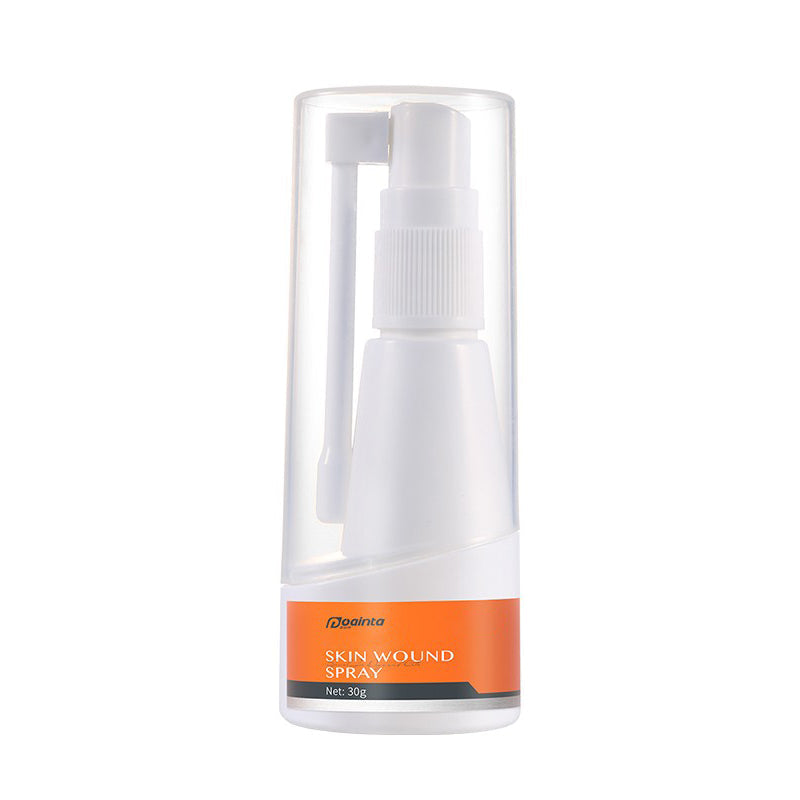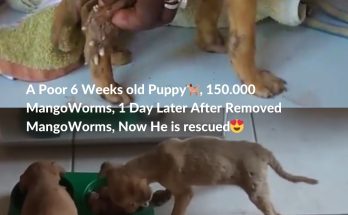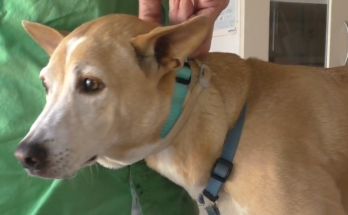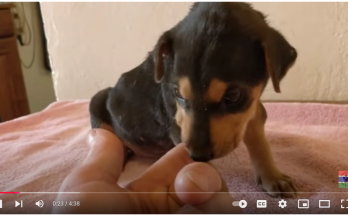Mango worms, also known as Cordylobia anthropophaga, are a parasitic infestation that can affect dogs in certain regions of the world. While relatively rare in many parts of the United States and Europe, these tiny worms can cause discomfort and health issues for dogs in areas where they are prevalent.
What Are Mango Worms in Dogs?
Mango worms are parasitic insects that can infest the skin of mammals, including dogs. The adult female mango fly lays her eggs in sandy or loose soil, feces, or on damp clothing, where it can survive for several days until it comes into contact with a warm-blooded host.
When the eggs come into contact with a host, they hatch into larvae, which can burrow into the skin of the host animal. In the case of dogs, mango worm infestations usually occur on areas of the body with less hair, such as the ears, paws, or groin.

Mango Worm Symptoms
Mango worm infestations in dogs can lead to various symptoms, including:
- Swelling: The presence of the larvae causes localized swelling and irritation at the site of infestation.
- Pain and discomfort: Dogs with mango worm infestations may scratch or chew at the affected area, which can lead to further irritation and discomfort.
- Abscess formation: As the larvae grow and feed on tissue, they can create abscesses or pockets of infection beneath the skin.
- Discharge: The infested area may produce a discharge that contains the larvae or pupae of the mango fly.
What Causes Mango Worms in Dogs?
The life cycle of mango worms begins with adult tumbu flies laying their eggs on damp soil or clothing that has been in contact with an infected host. When a dog (or another host) comes into contact with these contaminated surfaces, the larvae can then penetrate the skin through hair follicles or small openings, such as cuts or wounds.
Once inside the host’s skin, the mango worm larvae create a small, painful lump, which can become an abscess. Over time, the larvae grow and feed on the host’s tissue, causing discomfort and sometimes infection.
Mango Worm Treatment
If you suspect your dog has mango worms, it’s essential to seek veterinary care for proper diagnosis and treatment. Do not attempt to remove the larvae yourself, as it can lead to complications and infections.
Here are the typical steps for treating mango worm infestations in dogs:
Diagnosis
- Physical Examination: The first step in diagnosing mango worm infestation is a thorough physical examination by a veterinarian. They will inspect your dog’s skin for any signs of small raised lumps or lesions, which may indicate the presence of mango worm larvae.
- Visualization: To confirm the diagnosis, the veterinarian may use a flashlight or magnifying glass to closely examine the affected areas. They will look for tiny breathing holes in the skin where the mango worm larvae have entered. These holes are characteristic of mango worm infestations.
Local Anesthesia
- Administration: To minimize pain and discomfort during the removal process, your veterinarian may administer a local anesthetic around the affected area. This anesthesia numbs the skin and surrounding tissues, making the extraction of larvae less painful for your dog.
Larvae Removal
- Sterile Equipment: With the affected area numb, the vet will use sterile instruments like needles or forceps to carefully extract each mango worm larva individually. This process can be time-consuming, as there may be multiple larvae present.
- Gentle Extraction: The veterinarian will use gentle but precise techniques to avoid causing further trauma to the surrounding tissues. The larvae are carefully grasped and extracted without breaking them, as rupturing the larvae can lead to infection or inflammation.
Wound Care
- Cleaning: After the successful removal of the mango worm larvae, the veterinarian will clean the wound thoroughly using an antiseptic solution to reduce the risk of infection.
- Medications: Depending on the severity of the wound and the potential for infection, the vet may prescribe antibiotics to be administered orally or as a topical ointment to aid in healing and prevent secondary infections.
 |
Antifungal Spray is a medicated treatment for dogs & cats that deodorizes and helps relieve fungal and bacterial skin infections. The paraben-free formula is paw-feet for dogs and cats ages 12 weeks and older. |
 |
|
Pain Management
- Pain Relief Medication: If your dog is in pain or discomfort following the removal procedure, the veterinarian may prescribe pain relief medication. This can help alleviate any pain associated with the extraction and promote your dog’s comfort during recovery.
How Do You Prevent Mango Worms in Dogs?
Here are some steps you can take to prevent mango worm infestations in your dog:
Avoid Contaminated Areas
Be cautious about where you take your dog for walks or playtime. Mango worm larvae are commonly found in sandy or loose soil, so try to keep your dog away from such areas, especially in regions where mango worms are prevalent.
Use a Fly Repellent
Mango worms are usually transmitted by the mango fly (Chrysomya bezziana), so using a fly repellent on your dog can help reduce the risk of fly bites. Consult with your veterinarian for an appropriate fly repellent product.
Wash Bedding in Hot Water
Wash your dog’s bedding, blankets, and other fabrics in hot water regularly to kill any potential mango worm larvae that might have attached themselves to these items. Keeping your dog’s living area clean is crucial.
Remove Rotting Fruit
Mango worms can be found in rotting fruit or organic matter on the ground. Ensure that your dog doesn’t have access to areas with rotting fruit or debris. Clean up fallen fruit in your yard or the areas where your dog plays.
Bathe Your Dog
Regularly bathe your dog using a mild, pet-friendly shampoo. This can help remove any mango fly eggs or larvae that might be present on your dog’s fur. Pay close attention to areas where flies are more likely to deposit their eggs, such as around the ears, nose, and paws.
Inspect Your Dog
After walks or outdoor activities, inspect your dog’s fur for any signs of mango worm infestation. Look for small raised bumps or lesions with a tiny hole in the center, as this may indicate the presence of a mango worm larva. If you suspect an infestation, consult your veterinarian for proper removal.
FAQs
Can I remove mango worms myself?
It is not advisable to remove mango worms yourself. Consult a veterinarian for professional assistance to ensure safe and effective removal.
Can my dog get reinfected with mango worms?
Yes, dogs can get reinfected if exposed to the eggs or larvae of mango worms. Implement preventive measures to reduce the risk of reinfection.
Conclusion
Mango worm infestations in dogs can be uncomfortable and potentially harmful if left untreated. If you suspect your dog may have mango worms, it’s essential to seek veterinary care promptly. With proper diagnosis and treatment, most dogs can recover fully from this condition. Remember that prevention is key, so take precautions to keep your furry friend safe from these pesky parasites, especially if you live in an area where mango worms are prevalent.


